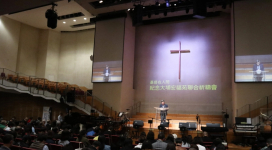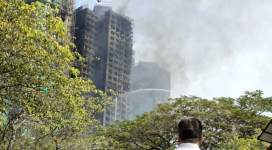NASA spacecraft New Horizons has successfully gotten close to the dwarf planet known as Pluto on Tuesday. It is considered the last step in human exploration of the solar system.
According to Marcia Dunn of the Associated Press, the New Horizons spacecraft traveled more than 3 billion miles over nine years from planet Earth to get close enough to Pluto. NASA science mission chief John Grunsfeld recalled the significance of that event.
"This is truly a hallmark in human history," Grunsfeld said. "It's been an incredible voyage."
The Associated Press reported that New Horizons swept within 7,700 miles of Pluto at 31,000 mph. However, the encounter happened 72 seconds earlier and about 40 miles closer than anticipated.
"Official confirmation of the flyby wasn't due until Tuesday night, 13 nerve-racking hours later," Dunn wrote. "That's because NASA wants New Horizons taking pictures of Pluto, its jumbo moon Charon and its four little moons during this critical time, not gabbing to Earth."
Dunn pointed out that the spacecraft's encounter with Pluto occurred 50 years after Mariner 4 flew by Mars. During that time, Mariner 4 took the first close-up pictures of the red planet.
"I think it's fitting that on the 50th anniversary we complete the initial reconnaissance of the planets with the exploration of Pluto," principal scientist Alan Stern said.
According to the Associated Press, the encounter with Pluto has made the United States the only nation to visit every single planet in the solar system. Both NASA brass and scientists hoped that the new observation would restore Pluto's status as a proper planet.
"It's a huge morning, a huge day not just for NASA but for the United States," NASA Administrator Charles Bolden said from the space agency's headquarters in Washington.
The Associated Press reported that NASA unveiled a new picture of Pluto on Monday at a news conference that showed the dwarf as an "icy, impacted world - a fusion of peach and brassy colors with bright spots at points northward, including the now-famous heart, and darker areas around the equator." Stern indicated that "a data waterfall" from the spacecraft could come as soon as Wednesday, although he urged caution until New Horizons sends a signal back to Earth.
"Hopefully it did, and we're counting on that," Stern said of the spacecraft's survival. "But there's a little bit of drama because this is true exploration. New Horizons is flying into the unknown."
According to Dunn, New Horizons has already brought back high-quality images of Pluto and its big moon, Charon. The spacecraft is expected to look at Pluto's four little moons as well.
"On the eve of the flyby, NASA announced that Pluto is actually bigger than anyone imagined, thanks to measurements made by the spacecraft, a baby grand piano-size affair," Dunn wrote. "It's about 50 miles bigger, for a grand total of 1,473 miles in diameter."
Other scientific hypotheses surrounding Pluto have been confirmed by the spacecraft, according to the Associated Press.
"Thanks to New Horizons, Pluto is now confirmed to be the largest object in the so-called Kuiper Belt, considered the third zone of the solar system after the inner rocky planets and outer gaseous ones," Dunn wrote. "This unknown territory is a shooting gallery of comets and other small bodies."
The chairman of the House Science, Space and Technology Committee, Rep. Lamar Smith, R-Texas, issued a statement on NASA's successful encounter with Pluto.
"These are the events that catch our imaginations and remind us why we must continue investing in planetary science and NASA's mission of space exploration," Lamar said.









